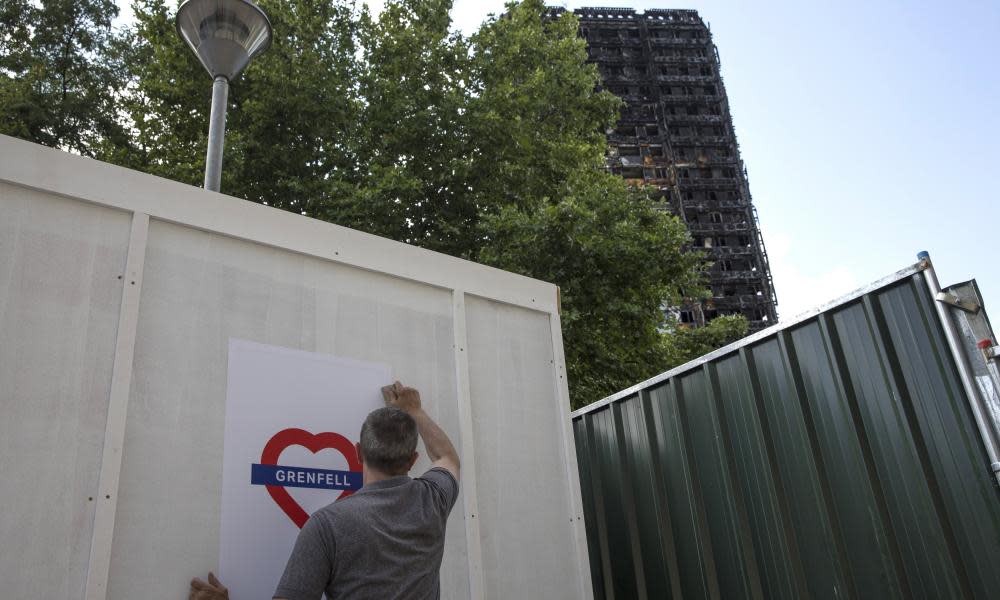Building regulations unfit for purpose, Grenfell review finds

A review of building regulations ordered in the wake of the Grenfell Tower fire has found the system is “not fit for purpose” and open to abuse by those trying to save money.
Dame Judith Hackitt’s interim report [pdf] into building safety calls for an overhaul of the construction industry to put safety ahead of cutting costs.
In a foreword to the report, Hackitt says she is shocked by some of the practices she uncovered. “The mindset of doing things as cheaply as possible and passing on responsibility for problems and shortcomings of others must stop,” she writes.
Her interim report highlights concerns about increased privatisation of the building inspection regime leading to safety being compromised and a reduction in expertise within local authorities.
It says: “There are notable concerns also that third-party inspections are open to abuse given the potential conflict of interests, with growing levels of mutual dependence between developers and contracted inspectors.”
Hackitt's key recommendations
Current building regulations and accompanying guidance are too complex and unclear, leading to confusion and misinterpretation when applied to high-rise buildings.
The clarity of roles and responsibilities in the construction industry is poor.
The accreditation system for building and safety assessors is inadequate.
The scope for residents to raise and escalate concerns is unclear and inadequate.
Product testing and quality assurance are unclear.
Those responsible for high-rise and complex buildings should be held to account to a higher degree.
Regulations and guidance must be simplified and unambiguous.
Primary responsibility for ensuring that buildings are fit for purpose must rest with those who commission, design and build the project.
Formal accreditation systems should be introduced for all those involved in the fire prevention aspects of the design, construction, inspection and maintenance of high-rise and complex buildings.
A stronger enforcement regime is required, backed up with powerful sanctions for those do not follow the rules.
Hackitt, an engineer and former chair of the Health and Safety Executive, was asked to chair the review after scores of high-rise buildings failed emergency safety tests conducted after the Grenfell Tower fire.
“The current overall system is not working effectively and needs to be overhauled,” she says.
Her interim report calls for an end to cost-cutting on materials. It is suspected that pressure to drive down the price of refurbishing Grenfell Tower led to cheaper, flammable material being installed on its exterior.
Hackitt says: “It has become clear that the whole system of regulation, covering what is written down and the way in which it is enacted in practice, is not fit for purpose, leaving room for those who want to take shortcuts to do so.”
She found that in some cases what is designed is not being built. She says: “I have been shocked by some of the practices I have heard about and I am convinced of the need for a new intelligent system of regulation and enforcement for high-rise and complex buildings which will encourage everyone to do the right thing and will hold to account those who try to cut corners.”
Asked on BBC Radio 4’s Today programme whether the regulations or people who enforced them were to blame, Hackitt said: “It’s a combination of the two … When regulations are complex it makes it quite difficult for people to penetrate that complexity to truly understand what they are required to do.”
She added: “There are issues of competence to be addressed as part of this.”
Hackitt said the next phase of her review would focus on “overhauling [the regulations] in quite a significant way”.
She added: “The regulations themselves are pretty simple but what sits below the building regulations is a whole series of guidance documents which stacked on top of one another would be about 2ft high … There is clearly an opportunity to make that much simpler and to guide people to the right answer.”
Hackitt’s interim report does not go into specifics, but she said the next phase due to be completed in the spring would examine issues such as sprinklers, cladding, alarm systems and escape routes.
She said: “I’ve talked to over 300 people. Overwhelmingly the view that has been expressed to me is that this system needs improving, and it needs greater clarity, and I’m hopeful that’s what I’m going to bring to the system.
“The quicker we can get some [improvements] in place, the sooner we can build that level of reassurance that residents of high-rise buildings absolutely deserve.”
Labour called for immediate government action to implement Hackitt’s interim recommendations.
John Healey, the shadow housing secretary, said: “Ministers have already been told that building safety rules need to be rewritten.
“It is now four-and-a-half years since two coroners’ reports into previous high-rise fires recommended an overhaul of building regulations. Ministers ignored the recommendations then and their promise to issue new regulations was never honoured.
“Rather than waiting for the final report of this inquiry, ministers should start acting on existing recommendations immediately and incorporate recommendations from Dame Judith Hackitt when her inquiry is completed.”
The communities secretary, Sajid Javid, welcomed the interim report as “an important milestone”.
He added: “We will continue work with Dame Judith and other partners over the coming months as she finalises her recommendations.”

 Yahoo News
Yahoo News 
